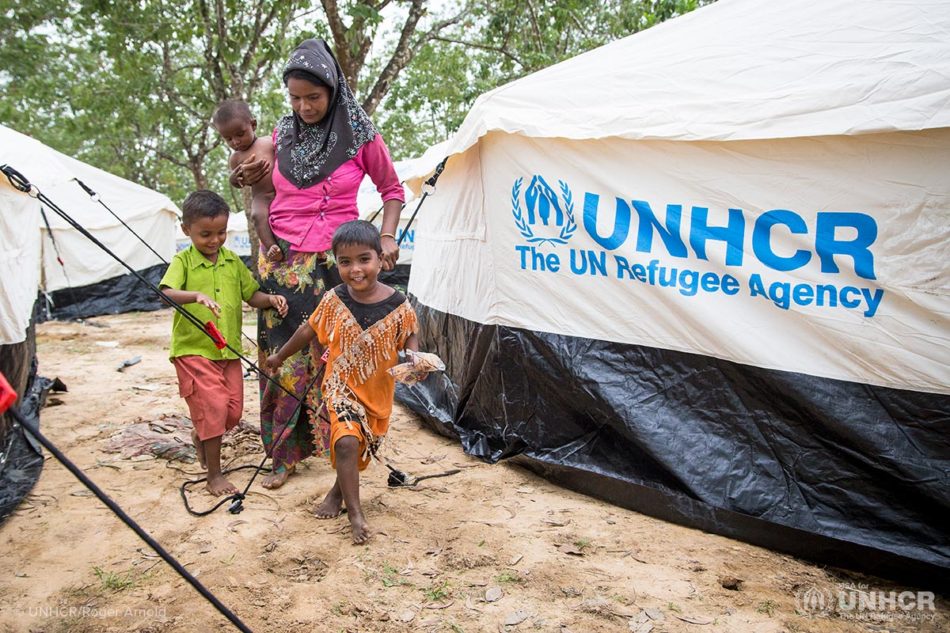Myanmar’s longest-running civil disobedience campaign against its military, the Tatmadaw, has created something that was never seen before: a unified Myanmar in the “burning state.” Not only that, but this solidarity has also changed Myanmar’s Rohingya ethnic politics. After the coup, most parties have attempted to reconcile with the ethnic minority population, which has been living a life of indefinite banishment in Rohingya camps in Bangladesh since 2017, after being denied citizenship in Myanmar. Therefore, the question is: why are the winds of change now blowing for the Rohingya community?
Old narrative
The anti-Rohingya sentiment stems primarily from “historical grievances” experienced by the Buddhist population prior to Myanmar’s independence in 1948. During the British colonization of Myanmar, Muslims who had fled due to persecution under the Bamar rule of the Konbaung Dynasty returned to Burma in the hope of regaining their ancestral lands. Along with that, there was a significant influx of Indian Muslims into Burma through British citizens for labor and civil service positions. For the Bamar-Buddhist people, this was not only oppression imposed by the British, they also saw the Islamist expansion in Burma as a calculated strategy on the part of the Muslim community to rewrite Burma’s Buddhist history.
Buddhist nationalism grew during the 1920s and 1940s, when anti-Muslim, anti-Christian, and anti-Hindu sentiments were on the rise, as evidenced by anti-Indian riots. The already-existing animosity became heightened during the Japanese invasion of Burma in 1942, which put the Burman and Rohingya communities on opposite sides, as the Rohingyas remained loyal to their British overlords.
During Ne Win’s military reign, the lessons learned from the British era were solidified: a true Burma must be both Buddhist and Burmese in nature. His “Burmese-Buddhist way to socialism policies, which he tried to implement by forcibly creating a Myanmar based on Burmese supremacy rather than accepting Myanmar’s diverse 135 national races, were a clear depiction of the Burmese fear of foreign invasion.
Ne Win was obsessed with the idea of “taingyintha,” which means “sons of the soil”, which is based on a classification of “national races” to bring Myanmar’s different ethnic groups under one umbrella. This led him to launch the “Naga Min” (“Dragon King”) military campaign against Rohingyas in 1978, which caused tens of thousands of civilians to flee to Bangladesh. The persecution continued further by means of the 1982 citizenship law that pushed Rohingyas even deeper underground, as it was clearly a political tool of repression to exclude the Rohingya and the Muslim minority groups from citizenship rights. By this point, the already marginalized Rohingya community faced a new foe in Aung San Su Kyi’s NLD, which shared the military’s view of them as illegal immigrants.
Finally, Myanmar’s flawed democracy in 2010 ended up sealing Myanmar’s door to the Rohingyas as inter-communal violence rose, with freedom of speech turning into hate speech against them. After that, the xenophobic 969 movements or the state-led “ethnic cleansing” of 2017 was just one tragedy piling onto another, with no hope anywhere for the community.
Winds of change
The whole of Myanmar now faces Tatmadaw’s aggression, and the Bamars, usually on the privileged side, have finally realized that everyone in Myanmar has the same grievance: Tatmadaw’s authoritarian regime. There has been an outpouring of support for ethnic minorities among protesters of the regime, particularly among the younger generation, who believe that a lasting peace in Myanmar can only be achieved if it includes all of Myanmar’s citizens, regardless of class, ethnicity, or religious affiliation. This shift in empathy has also altered long-held perceptions of the Rohingya.
The National Unity Government (NUG) (representing the underground NLD government in the resistance) has already publicly apologized for the Rohingya community’s sufferings during the 2017 military-led ethnic cleansing. Five months after the coup, on June 3, 2021, the NUG released a historic paper addressing the Rohingya community, arguing that they should be recognized as a legitimate ethnic group in Myanmar and added to the list of “national races” (taingyintha). It was as historic as it could get, as neither the military nor the democratic government had even referred to the community as Rohingya in the political arena prior to the coup because the term implied that they were connected to Myanmar.
The NUG took a step that undoubtedly eased the generational curse of statelessness that had befallen the Rohingya people for generations. Along with the proposition, the NUG also promised to cooperate with the Court in the ICJ case of Rohingya genocide. This represents a 180-degree shift from the NLD’s position on the case, as the NUG not only recognizes the genocide but also rejects its “symbolic” state counselor, Aung San Suu Kyi’s, statement in 2019 in which she stood in court to defend the Junta’s actions. This declaration was celebrated by the youth on social media and in the streets by flash mobs as they now want to believe in a Myanmar that is free from the discriminatory laws and policies of the military. They want a Myanmar which is recognized in the world as one that is equal for all.
The realistic perception would be that this is the NUG’s strategy to win international approval and political legitimacy. However, if the NUG is given the legitimacy to fulfill its promises, it will be interesting to see how it handles the repatriation issues in the future while balancing the past NLD and current NUG policies.
Perhaps this is where Myanmar’s radical political transformation finds its true essence. Whatever approach it takes, the Rohingya crisis is undoubtedly a problem for tomorrow for the NUG and its allies, as they are currently trying to survive the junta’s onslaught every minute.
*The writer is a student of Peace and Conflict Studies (MSS) in Dhaka
University, Bangladesh.
February 24, 2023
The viewpoints expressed by the authors do not necessarily reflect the opinions, viewpoints and editorial policies of Aequitas Review.


